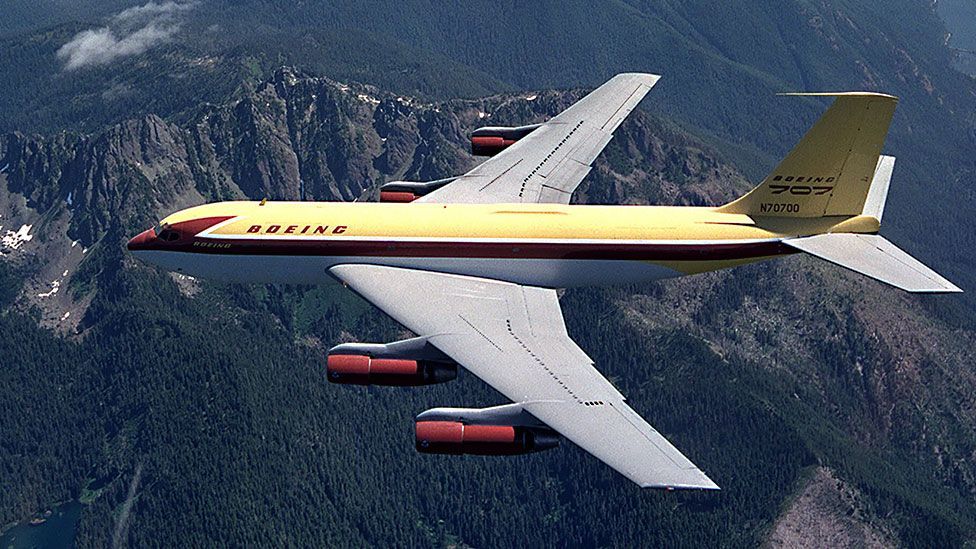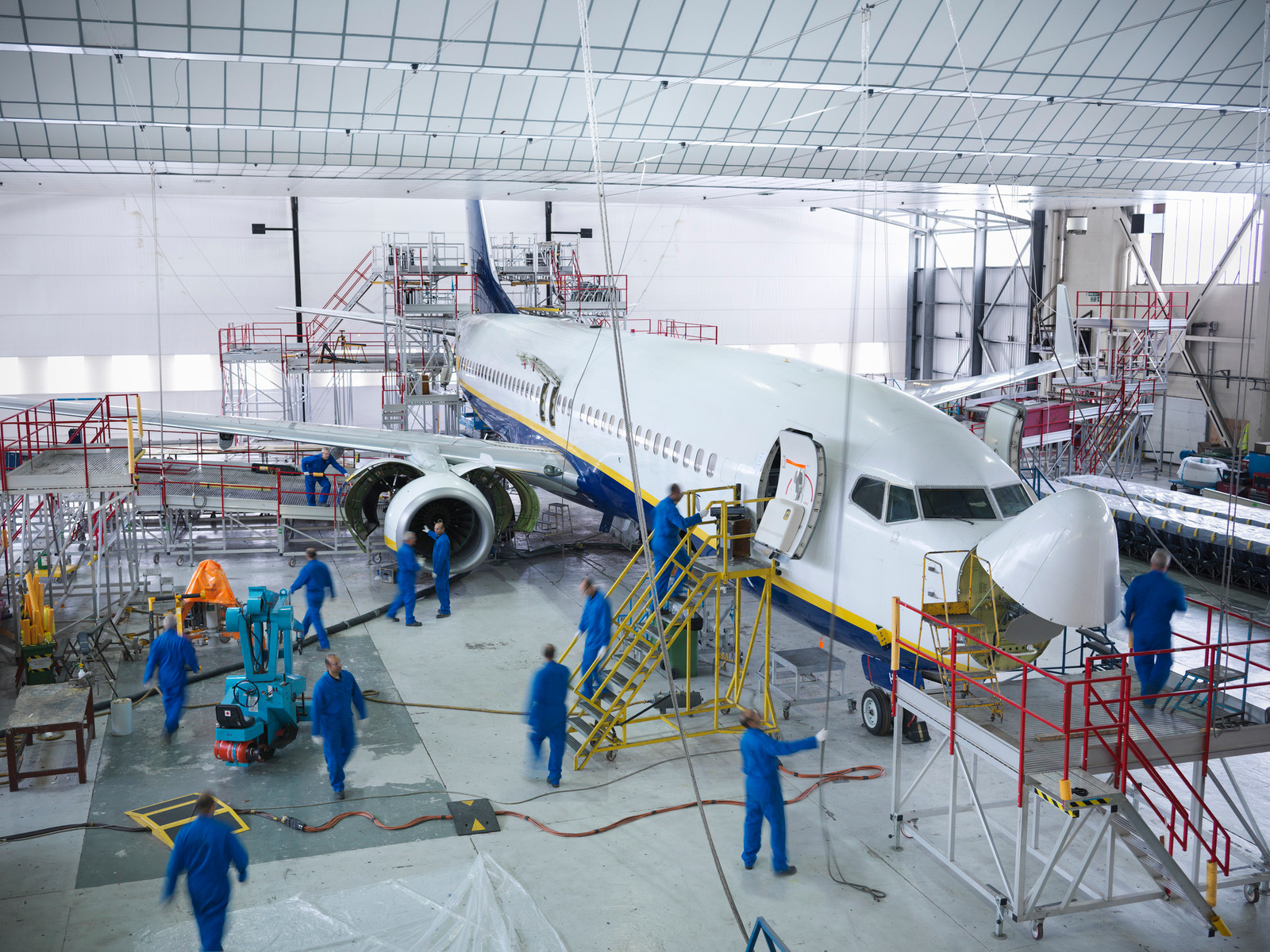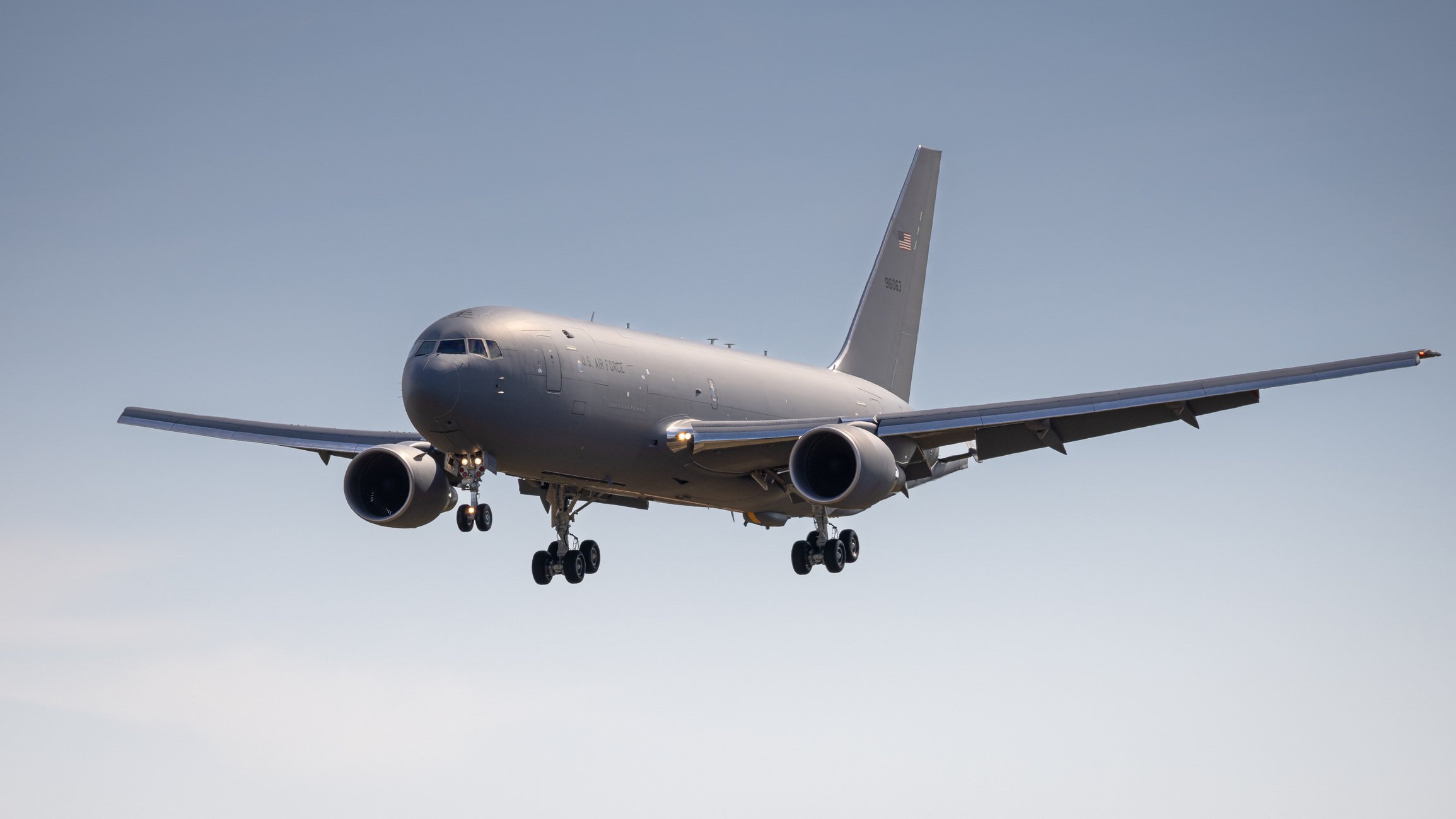Boeing 707: Modern Commercial Aviation Successfully Takes Flight

Modern commercial aviation was in a post-World War II holding pattern after structural problems with the first commercial jet, the de Havilland Comet, led to catastrophic accidents.
It would take a gamble by Boeing, leading to the development and manufacturing of the iconic Boeing 707, to successfully launch the modern commercial aviation era.
“Boeing Company President William Allen and his management are said to have "bet the company” on a vision that the future of commercial aviation was jets. In 1952, the Boeing board gave the go-ahead to commit $16 million of the company’s own money to building the pioneering 367-80, nicknamed the “Dash 80,” says Boeing. “That then-huge amount represented nearly all the profit the company had made since the end of World War II.”
The gamble paid off as the commercial version of the Dash 80, the Boeing 707-120 made its first flight on Dec. 20, 1957, and the “jet age” was christened when it went into commercial service on Oct. 26, 1958.
“In just two years, the 707 would help change the way the world traveled. Travel by air eclipsed travel by rail and sea,” says Boeing.
The 707 clearly outshone the Comet and all other comers.
“Its main competitor at the time was the British De Havilland Comet, but the 707 had accommodations for approximately four times as many passengers as the original Comet I that had first flown on July 27, 1949—it was also 100 mph faster than the Comet. This, combined with a series of accidents for the Comet, helped establish the 707 in worldwide service,” said The Aviation History Online Museum.
Boeing “Dashes” to Deliver First American Commercial Jet Airliner
Some 50 years after the Wright Brothers launched the pioneer era of aviation with the first sustained flight by a manned heavier-than-air powered and controlled aircraft on Dec. 17, 1903, Boeing (with the 707) and Douglas Aircraft (DC-8) were in a race to deliver the first American modern commercial aircraft.
While the Wright Brothers cruised at 30 miles per hour, the Boeing 707 could achieve a speed of 600 mph, faster than the DC-8, and Boeing was able to deliver the Boeing 707 to the market first.
The Boeing 707 was unmistakable in the skies with its swept-back wings powered by four underslung 10,000-pound-plus-thrust turbojet engines.
Time magazine, on hand for the first test flights, described the Boeing 707 in romantic terms: “But the most exciting thing about Boeing's spectacular course last week was a brand-new airplane that was rolled out for its preflight tests—a big, sleek, new job painted a rich yellow and chocolate brown, with sharply swept-back wings and four huge jet engines slung underneath.”
The Boeing 707 technical specs:
- Span: 130 feet 10 inches
- Length: 144 feet 6 inches
- Gross weight : 248,000 pounds
- Cruising speed: 600 mph
- Range: 3,000 miles
- Ceiling: 41,000 feet
- Power : Four 13,500-pound-thrust P&W JT3C-6 turbojet engines
- Accommodation: Up to 181 passengers 707/720
Pan Am the First Airline to Operate the Boeing 707
The Boeing 707 first test flight on Dec. 20, 1957, was just part of 1,500-plus hours of test flights over four years from prototype to production.
Pan Am was the first airline to operate the 707 with the aircraft rolled out to hoopla at National Airport, just across the Potomac River from Washington, D.C., on Oct. 17, 1958, with President Eisenhower attending the festivities.
VIPs then took a transatlantic flight from Baltimore’s Friendship International Airport to Paris before the aircraft’s first official commercial flight on Oct. 26, 1958, from Idlewild Airport in New York City to Paris.
The 8 hour, 41-minute history-making flight included a fuel stop in Newfoundland.
The Boeing 707 quickly became the de facto aircraft for commercial aviation:
- In December, National Airlines operated the first US domestic jet airline flights between New York/Idlewild and Miami, using 707s leased from Pan Am
- American Airlines was the first domestic airline to fly its own 707 jets, on Jan. 25, 1959.
- TWA started domestic 707-131 flights in March 1959
- Continental Airlines started 707-124 flights in June 1959
- Airlines that had initially ordered only the DC-8, such as United, Delta and Eastern, had to play catch-up and wait for 707s until September 1959 or later
- Qantas was the first non-US airline to use the 707s, starting in 1959
The 1960s were the heyday of the Boeing 707 with the aircraft used for most domestic and international flights.
Boeing, which produced just over 1,000 total 707 jets, rolled an average of three off the assembly line in 1967 and 1968 with 229 aircraft delivered in those two years.
Boeing 747 Jumbo Jet Spells the End of the 707
As the 1960s ended, the 707 dominated air travel but the end was already in sight as the Boeing 747, the world’s so-called first “jumbo jet”, had its first flight on Feb. 9, 1969, and Pan Am put the first 747 aircraft into service on Jan. 22, 1970.
Some argue that the 707 was a victim of its own success as it was too small to handle the demand for air travel.
The 747 was more than two times the size of the 707 and could handle a whopping 416 to 660 passengers vs. the 707’s capacity between 140 and 189.
The 747 was also designed with greater fuel economy than the 707 and had a quieter noise footprint, a growing issue at airports around the world with increased aviation travel.
By the end of October 1976, it is estimated that the Boeing 707 had flown more than 30 million hours and carried just under 522 million passengers.
The last Boeing 707 scheduled flight in the U.S. was a TWA flight from Miami to New York City on Oct. 30, 1983.
The 707 would still be in service on lesser-known airlines around the world in declining numbers with the last recorded scheduled commercial flight in 2013 on Saha Airlines in Iran.



